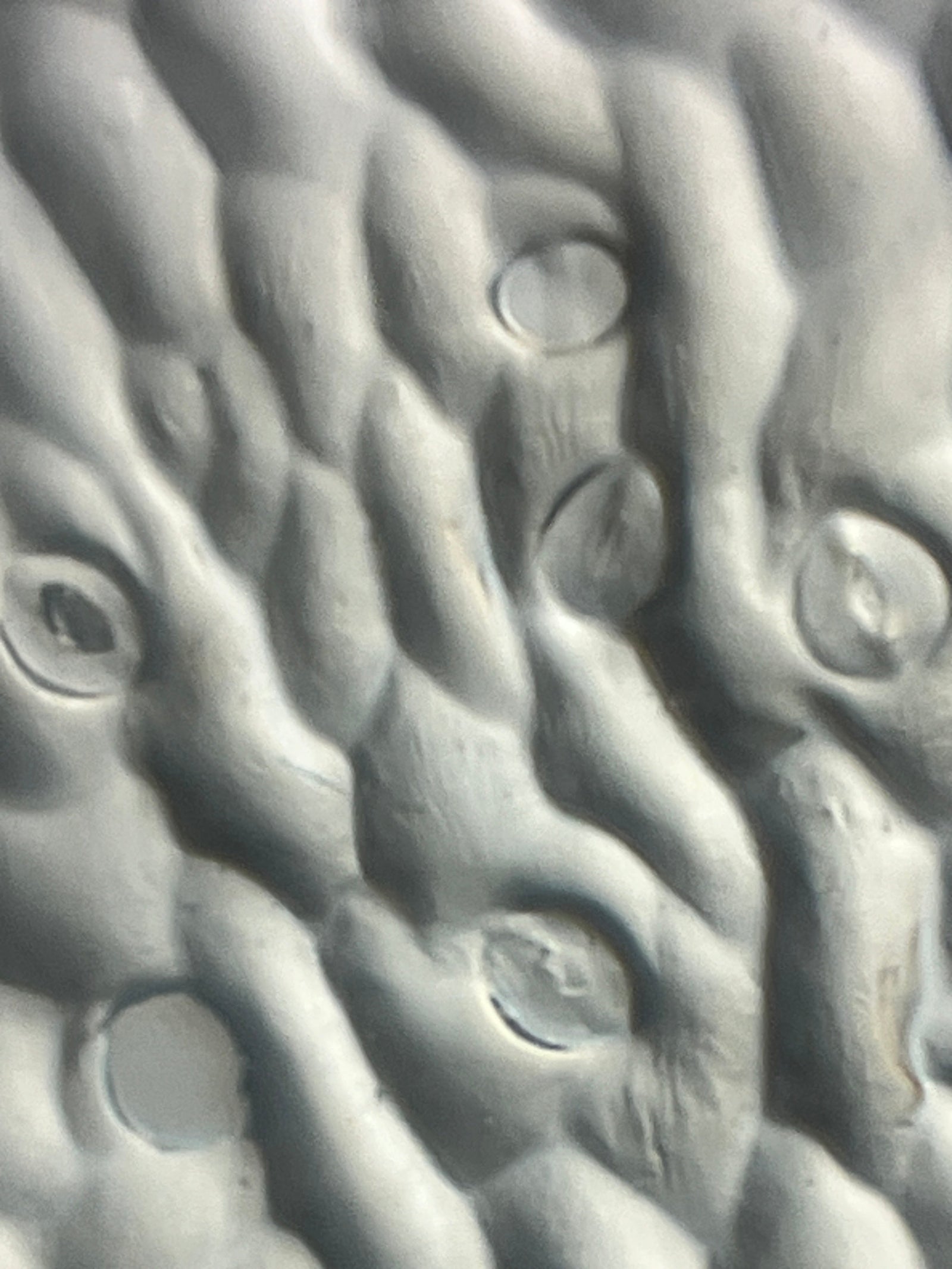Watch the video version of this blog here:
It is March and all around me plants are starting to emerge from the ground after the cold winter season. It is also the month for St. Patrick’s Day and four leaf clovers! All of these things make me think of the color green and how we can learn more about it under a Foldscope. Let’s take a closer look at what makes something green!

What does it mean to be green?
Visible light waves (the light we can see) are different colors based on how long they are (wavelength). Violet light has a wavelength of 400 nm and red light is 700 nm. All of the other colors fall in between these distances with green coming in at a wavelength around 540 nm. The color you see on an object comes from light waves hitting it, bouncing off of the object, and entering your eyes. Therefore, if an object appears green, it is because green light waves are reflecting off of the surface of the object and hitting your eyes, making you see the color green.
With pigment (paint, crayons, markers, etc.), the six colors of the rainbow are divided into two groups: primary (red, yellow, and blue) and secondary (orange, purple, and green). The secondary colors are made by mixing two primary colors together. The color green is actually a combination of yellow and blue pigment. To demonstrate this phenomenon, let’s compare manufactured green pigment with hand made green pigment created from a combination of yellow and blue and study them under a Foldscope!

Green Objects Under a Foldscope
The difference between solid green and green created by mixing primary colors might not look that different to the naked eye, but when you peer deep into the microscopic level, it is easy to tell which is which!
Let’s start with colored pencils. Figure 3 on the left shows a piece of paper colored in with two different shades of green colored pencils. Figure 3 on the right shows a piece of paper that has been colored in with yellow and blue colored pencils (allowing the two colors to mix in the middle). Just looking at the images with your eyes, the space between the yellow and blue appears green.

However, when you look at the paper under a Foldscope, you can see the difference. While the magnified green image in Figure 4a shows only green pigment, the mixture shown in Figure 4b clearly reveals spots of both yellow and blue pigment next to each other.

Colored pencils allowed for a lot of the individual paper fibers to be seen because the pigment doesn't coat them very heavily. When using a washable marker to do the same demonstration, the green color gets more intense on the paper as more fibers are coated with the pigment (Figure 5), but the Foldscope images still allow you to see the spots of yellow and blue pigment (Figure 6b) as compared to the pure green washable marker (Figure 6a).


It is interesting to note that even when using a washable marker, uncolored paper fibers are still visible under the Foldscope. The next step to test how well colors mix under a microscope was to use a permanent marker (these pens usually coat paper so well that the color bleeds right through to the back side). As evidenced in Figure 7, the color on the paper is much more intense when using a permanent marker. In the microscopic images, there were no white paper fibers visible with the permanent marker (Figure 8a), however, the separate yellow and blue pigment was still able to be seen under the Foldscope (Figure 8b).


What other ways can you think of to study color mixing under your Foldscope? What other color combinations can you make? Share your microscopic images on the Microcosmos and use social media to tag us with the results of your explorations, creations, and discoveries! We love to see how Foldscopers around the world are using their Foldscopes in new and innovative ways!
Facebook: @Foldscope
Twitter: @TeamFoldscope
Instagram: @teamfoldscope



